STEEN ANDREASEN is running out of options to keep his central Montana ranch in his family. The 54-year-old is raising his own two sons along with his two nephews on the 23,000-acre family place located along the Marias River between Great Falls and Havre. Andreasen’s grandfather homesteaded the original part of the ranch in 1915.
It’s been a tough century for the Andreasen family. Extreme weather, untimely deaths, and generational debt have put Steen deep in a hole. His last hope for saving the ranch is Montana Fish, Wildlife & Parks’ conservation easement program, which provides up-front cash in exchange for limits on development, a sustainable livestock grazing plan, and public access for hunting and fishing.
Andreasen applied to the program in 2018, and his project has been approved at ascending levels of authority inside the agency. But now the deal is held up somewhere deep within the bureaucracy of state politics, and Andreasen isn’t the only one waiting. More and more easement deals have been stalled, while hunting-license money earmarked to pay for these land deals keeps accumulating. As the state’s politics took a hard turn to the right, there’s been a concerted effort to kneecap the program that mainly benefits conservative, rural landowners—and hunters and anglers.
FWP’s conservation easement program has been the gold standard for sustaining Montana’s working farms and ranches for nearly 30 years. Over those three decades, the agency has enrolled nearly 500,000 acres statewide in easements, all of which mandate public access for fishing and hunting, require a rest-rotation grazing plan, and limit the amount of surface disturbance and development the cooperating landowner can do on their own place. The most profound detail about the vast majority of these land deals: they’re designed to be in place forever.
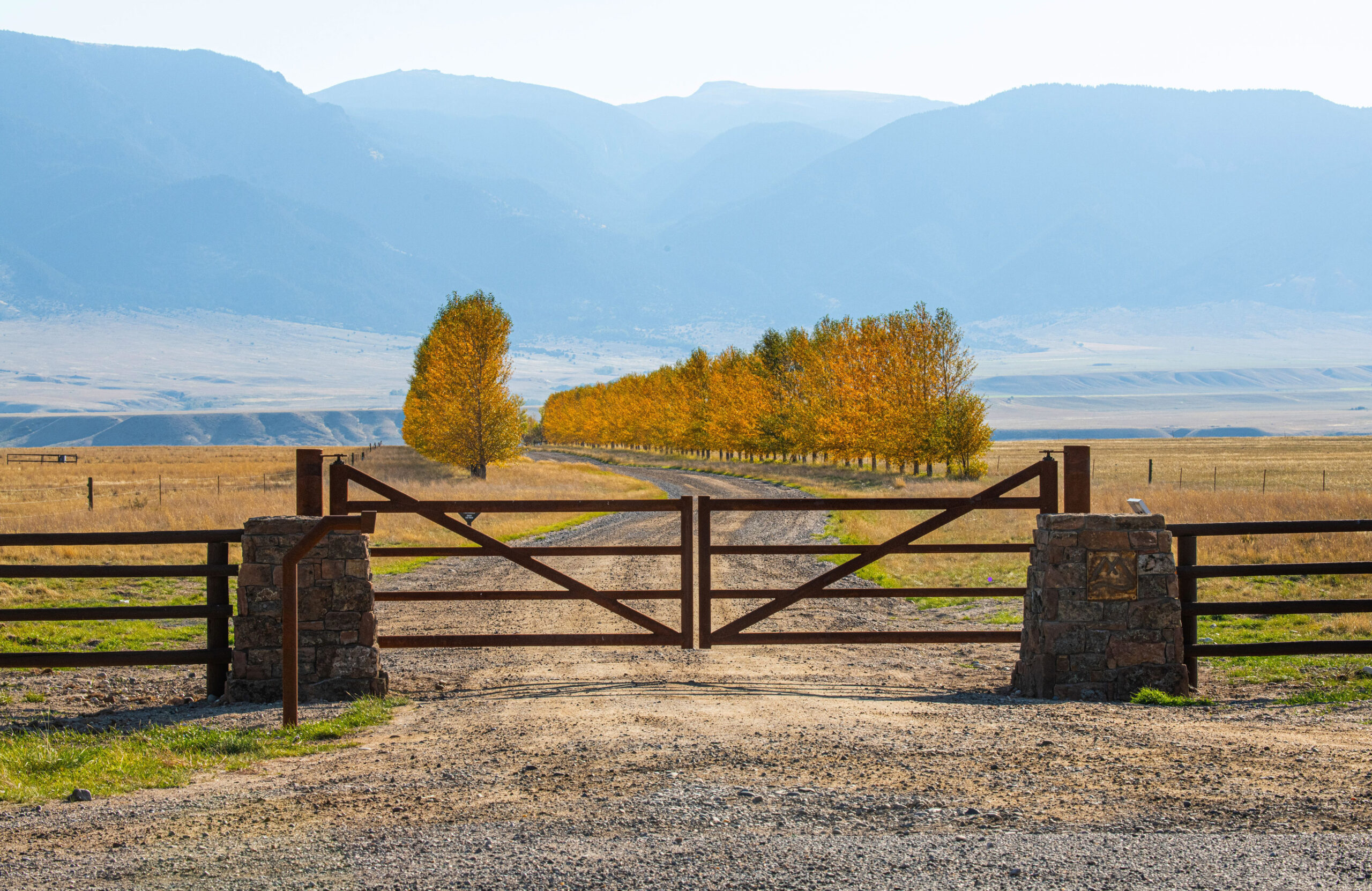
Because of the perpetual nature of FWP’s conservation easements, they’re not cheap. They are generally purchased for about 40 percent of the appraised value of the land, a cost that runs in the millions for large acreages. Landowners, who keep title to their land, get a big chunk of cash to pay down debt, buy additional acreage, or future-proof their operations. Sportsmen and women of Montana get abundant hunting and fishing access. And natural resources—whether native grouse or clear water or pronghorn antelope—benefit from the certainty that the landscape won’t change, and will even be improved with grazing plans and habitat treatments.
Funding for FWP’s easements originates from a portion of hunting license fees that are deposited in what’s called the Habitat Montana fund. The fund, created by the 1987 state legislature, raises about $5 million annually (over 90 percent comes from non-resident hunting licenses) and is used as match for Pittman-Robertson funds, Montana’s share of federal taxes collected from the sale of guns and ammunition.
The Price of Forever
Language defining the duration of conservation easements—“they may be granted either in perpetuity or for a term…that may not be less than 15 years”—is detailed in state code. But perpetual easements have come to define FWP’s program, partly because other agencies and land trusts offer easements with shorter durations and different terms, and partly because valuation is hard to determine on shorter-term agreements, observes a real estate appraiser who spoke on background for this story.
This “forever rule,” along with the access requirement, has turned some landowners off to FWP’s easements. But Martin Balukas, a former lands agent with FWP, said that he was routinely contacted by landowners interested in the agency’s easements.
Balukas says what’s appealing about FWP’s easements is that they are applied in Montana’s rural hinterlands. Those “non-sexy places,” as he calls them, might not attract groups that are using easements to slow development around Bozeman or Missoula, or to preserve open space in Montana’s fast-growing western valleys.
“Those land trusts are not buying easements along Highway 2,” the lonely two-lane highway that stitches together northern Montana’s Hi-Line. “But FWP is. Or was.”
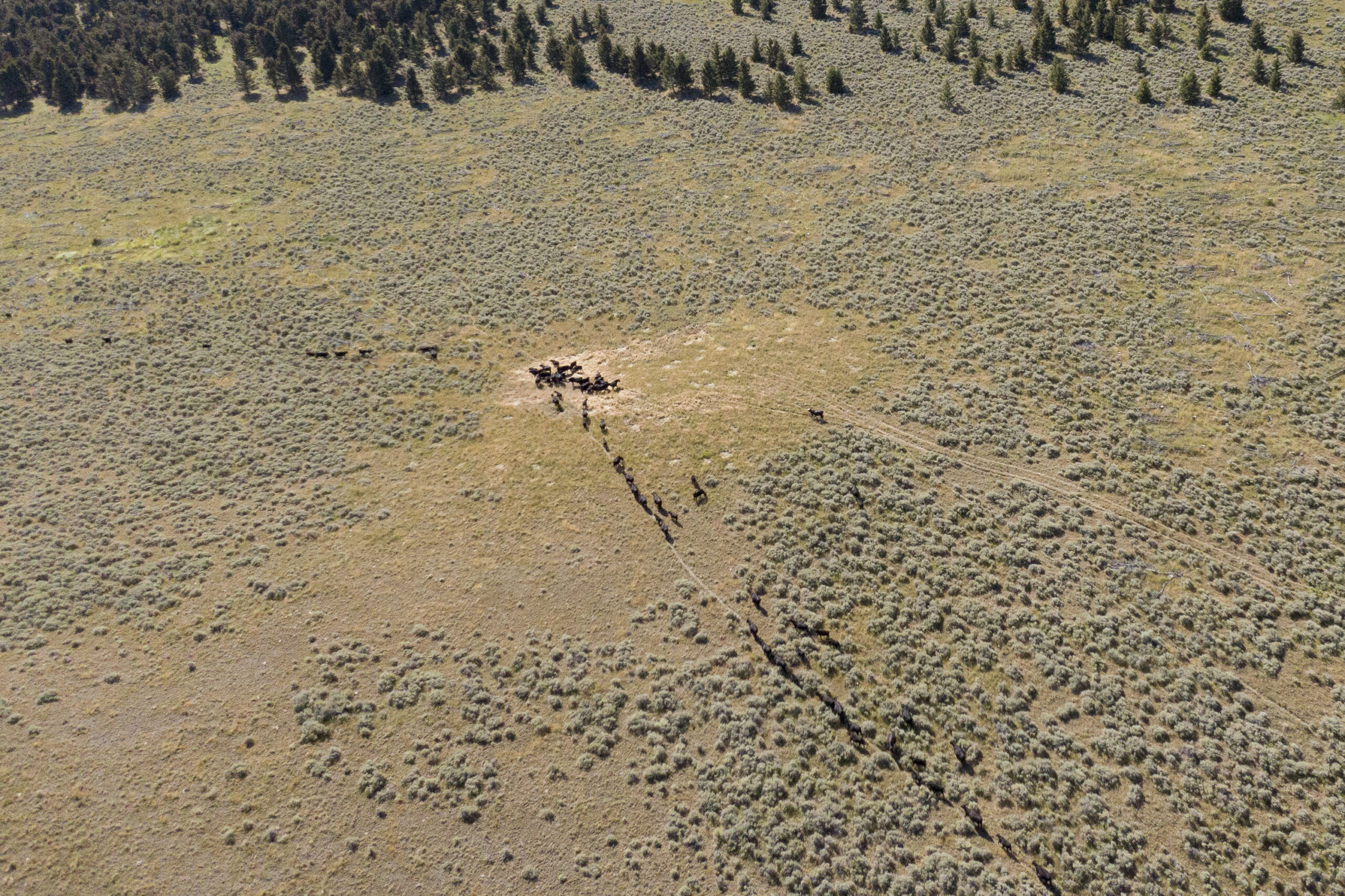
“There are generally three kinds of landowners interested in easements,” adds Balukas, who now works for Montana’s Department of Natural Resources & Conservation. “Those who see it as a way out of a particular problem, whether they have debt or need to restructure their operation. Then there were those who use it as an estate-planning tool, buying out siblings uninterested in farming or parents ready to retire. Then there are business-minded ranchers who see it as a way, for example, to buy a center [irrigation] pivot for their hay operation and who can then retire their dryland hay ground and graze it.”
The common thread of those motivations is a landowners’ interest in conservation and a desire to maintain their agricultural legacy. As Montana has grown at an unprecedented clip over the last decade, those motivations are getting harder to realize, especially since outright sale of the land is often the easiest and most lucrative option.
A Lifeline for Landowners
Steen Andreasen acknowledges he’s one of the first types of landowners Balukas describes.
“I’m at the point, because of debt, where I have to sell something,” he says. “This [conservation easement] is an opportunity for me to sell something but still have the place in the family.”
The 23,600-acre Andreasen spread—it was enlarged from the original homestead by acquiring neighbors’ property over the decades—is an island of sorts. Located upstream of the little river-bottom town of Loma, the ranch includes about 7 miles of the Marias, which last year produced the state-record brown trout, a slab-sided 32-pounder. A bench above the river also hosts one of central Montana’s westernmost sage grouse leks, or dancing grounds, for the sparse upland species. The Andreasen place holds mule deer, whitetails, antelope, and a wide variety of upland birds and waterfowl in addition to multi-species fishing opportunities. The main tributary of the Marias on the ranch is called Chip Creek.
“This conservation easement is an opportunity for me to sell something but still have the place in the family.”
—Steen Andreasen
“It hardly runs but maybe once or twice a year,” says Andreasen. “When my mom was a kid it was called ‘Buffalo Chip Creek,’ and I guess back when my grandfather came here they called it ‘Buffalo Shit Creek.’”
The majority of Andreasen’s place, which he operates with the kids and his wife, Dawn, is native rangeland, shortgrass prairie that’s a rarity in Montana’s grain-rich “Golden Triangle.” It’s especially rare in Chouteau County, where tens of thousands of acres of grass was taken out of the federal Conservation Reserve Program just this year and converted back to wheat and barley as commodity prices spiked with Russia’s invasion of Ukraine.
“We’ve had a string of bad luck, for sure,” says Andreasen. “Between getting hailed out three years running, and then the death of my brother, who was the farming half of the operation, we’ve been backed to the wall. But I’d say the biggest weight is generational debt that we’ve carried since buying out my aunts, uncles, and cousins.”
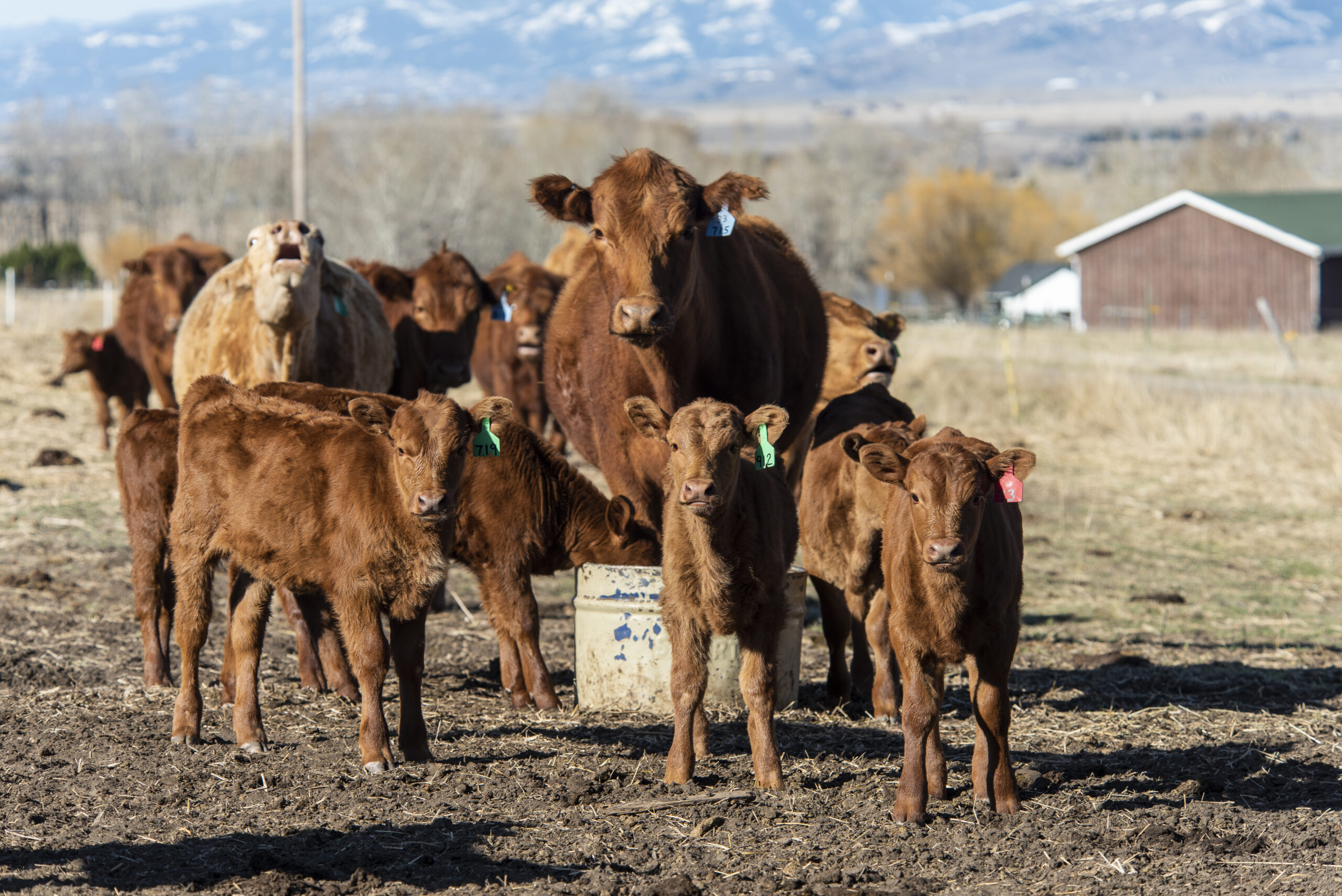
The debt is significant enough, and now mature enough, that his bank has notified Andreasen that he needs to either find a way to cash-flow the place or sell all or a portion of the land to pay down the note. He’s surrounded on three sides by Hutterite colonies that have approached him about buying the place as extensions of their grain operations.
Then Andreasen heard about Fish, Wildlife & Parks’ conservation easement program and determined it was the right tool to not only allow him to stay on the family place but to conserve and heal the native range that attracted his grandfather 117 years ago.
One Man’s Last Hope
Andreasen has been working on an easement contract with FWP’s area biologist for nearly five years. Because FWP isn’t interested in purchasing easements on crop ground, Andreasen seeded back tilled acreage into grass in order to bring his whole ranch into compliance with program standards.
“We started this in February 2017. That was the first meeting I had [with FWP],” says Andreasen. “I’ve been seeding back the 8,000 acres of farm ground since 2018. We’ve spent $250,000 just on grass seed. We’re deeply invested in this thing, because we’ve been continually told that our proposal was good and was just working through the system.”
Indeed, an environmental assessment of the Chip Creek Conservation Easement, one of the last steps before approval, was published in October 2021, it received overwhelmingly favorable comments. Regional news media ran stories about the proposal. Sportsmen’s groups cheered the prospect of land and water access midway between Montana’s third- and eighth-largest towns. Money from the Habitat Montana account was earmarked for the project, and Andreasen and agency staff waited for a final round of approval, from FWP Director Hank Worsech.
A year later, they’re still waiting.
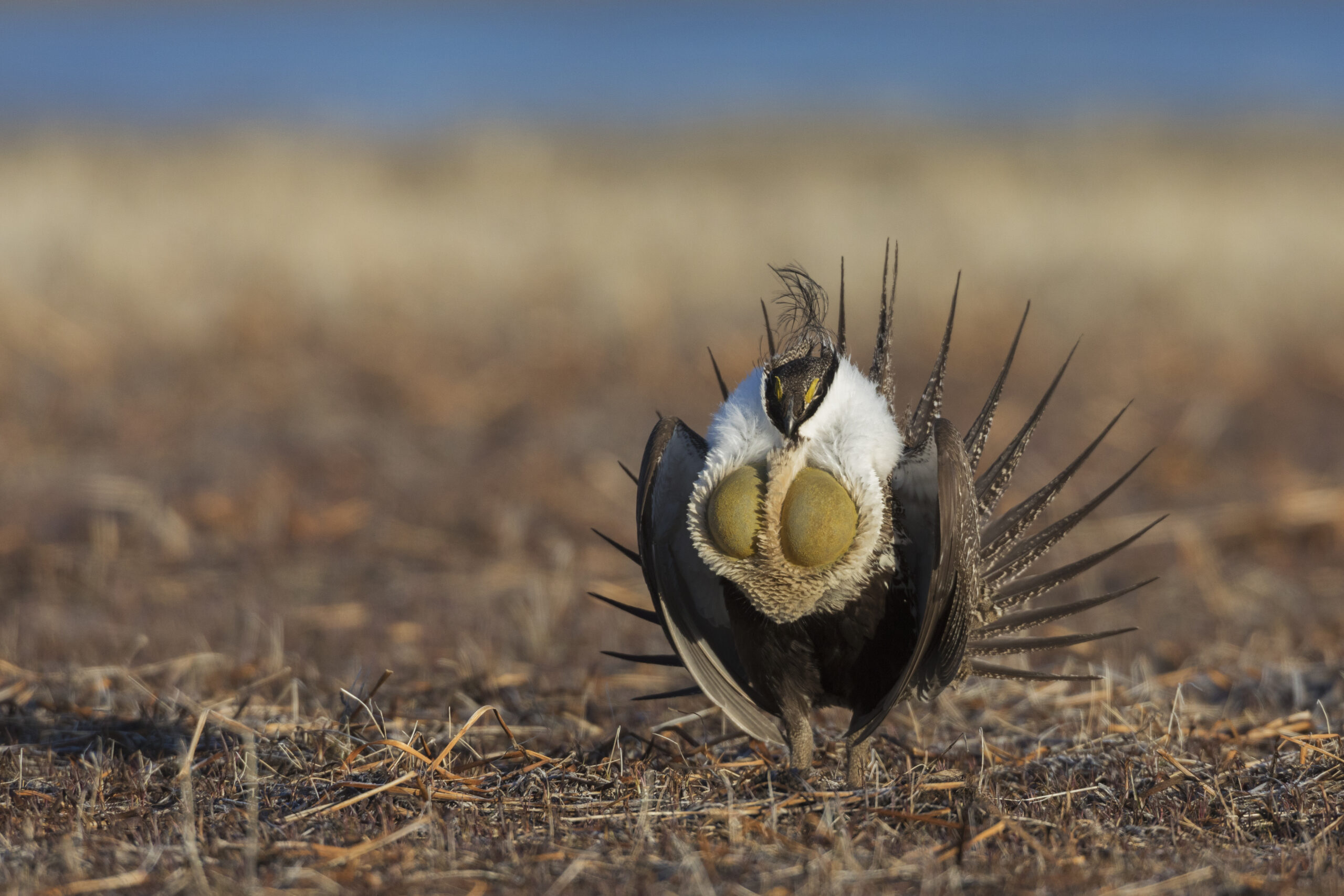
“The idea I get from the whole situation is that this project is on the governor’s desk, and Director Worsech, as an appointee of [Governor Greg] Gianforte, isn’t going to do anything without the governor’s say-so,” says Andreasen. “So we’re stuck. We’re at the place where FWP has to conduct an appraisal, and I can’t get them to pick up the phone. I was told that [FWP] doesn’t want to go forward with this if they think it will ultimately be rejected by the [state] Land Board, so they’re in a holding pattern.”
Welcome to the politically hazardous arena of natural-resource policy in Montana, a state that has both been a national leader in landscape-scale conservation and where local and state-level politics have made a hard turn to the right in recent years. There’s no better indication of this change than the state’s Land Board.
The Politics of Montana Real Estate
Composed of the governor, state superintendent of public instruction, attorney general, secretary of state, and state auditor, the Montana Land Board traditionally has been the final arbiter of public-sector land acquisitions. That includes, for instance, outright purchases of real estate for wildlife management areas or fishing access sites. By law, it also approves transactions that affect the state’s trust lands, public property managed to generate revenue for schools and other “endowed institutions” in Montana.
But FWP’s conservation easements, while not fee-title land acquisitions, have an important recent history with the Land Board. It’s one that illuminates this collision between those who consider easements to be the best tool to preserve working landscapes and those who think they’re examples of government overreach.
The Horse Creek Conservation Easement proposed to provide access to and conserve working ranch lands on a large property near Wibaux, in extreme eastern Montana within sight of the North Dakota border. For $6.1 million in public funds, sportsmen and women would have secured permanent access to 15,000 acres of wildlife-rich land, the culmination of a public process that mirrors Steen Andreasen’s almost exactly.
The project passed FWP’s internal review, was heralded by local and statewide communities, and then came before the Land Board in 2018 for final approval. The board voted 3-2 to delay approval of the easement, a decision that ultimately went to the state’s Supreme Court. It ruled that easements, because they’re not land acquisitions, don’t legally require Land Board approval. The Horse Creek easement went forward, on tenuous executive-branch action pushed by then-Gov. Steve Bullock, the last Democrat to hold state-wide office in Montana.
But conservatives in Montana’s legislature winced at the Supreme Court’s decision, and with a significant majority of Republican votes, passed a bill in the 2021 session requiring all conservation easements committing over $1 million in public funds to receive Land Board approval.
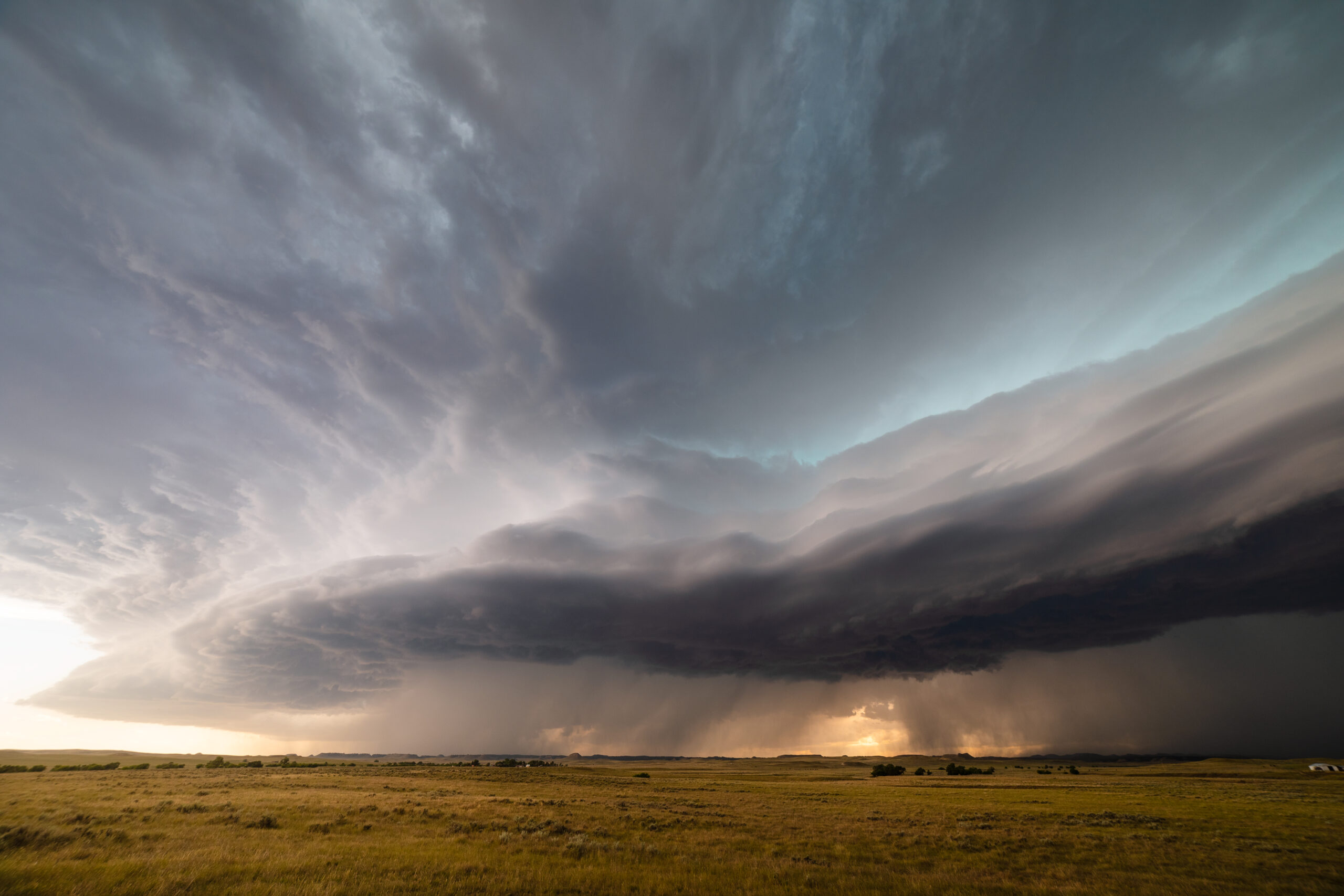
The 2021 legislation has effectively short-stopped not only Andreasen’s Chip Creek project, but a handful of other conservation easements that would keep working ranchers on their lands. Critics of these land deals base their opposition, in part, because they say easements limit future development that may not be even be conceived of now.
“Eastern Montana has always been called ‘next-year country,’” says Balukas. “There’s a sense that anything that might slow the next boom, even if it’s on private land, is bad for local economies.”
Critics also claim that conservation easements erode the tax base in already poor rural counties.
They’re wrong about that, says Steve Page, the patriarch of a sprawling cattle operation in northeastern Montana’s Valley County that entered into a FWP conservation easement back in 1994. It was one of the first large easements that FWP undertook with a working ranch, and applies conservation measures—including rotational livestock grazing—to 19,000 deeded acres and another 130,000 acres of state and federal land that includes core habitat for Missouri Breaks elk, bighorn sheep, antelope, and sage grouse.
As one of the pioneers of conservation easements in Montana, Page says the agreements are widely misunderstood, and maybe intentionally, misrepresented. (The family’s South Ranch has since been purchased by American Prairie. The FWP easement conveyed with the property.)
“There is no impact on the tax base of rural counties,” he says. “You are not selling title to your land. The landowner is still responsible for paying taxes based on taxable valuation, and in some cases easements actually increase the valuation of land. With an easement, you are basically selling some property rights. Maybe you sell a future right to build a subdivision, or to have a commercial operation other than livestock. And you certainly sell your property right of access. So in that sense, you sell real property rights when you sell an easement, but there is no land grab. There is no transfer of title. A conservation easement has absolutely no impact on taxable valuation of the property.”
Indeed, conservation easements can be considered an expression of a value that’s sacred to rural conservatives: property rights. That’s a perspective Jeff Raths, a rancher north of Billings, described in a newspaper opinion column this month.
“In the last legislative session, politicians… attempted to legislate who a farmer or rancher could not sell their land to,” wrote Raths, who has negotiated a conservation easement with the Montana Land Reliance. “As I look around at farms and ranches in my part of Montana where ag families have placed conservation easements, here’s what I see: I see that conservation easements have helped keep properties together, and in some cases, families together when the properties were no longer sustainable for the number of cousins. I see that a conservation easement has allowed the State of Montana—not the federal government—to remain in charge of managing sage grouse populations. And I see working ranches with world-class elk habitat, rather than carved-up commercial hunting camps. In short, I see a cornerstone of the Montana way of life—production agriculture—being sustained by conservation easements. Pretty good things, in my view.”
State legislators, along with Governor Greg Gianforte, have indicated that their opinion of conservation easements hinges on local support, usually expressed by county commissioners. Wibaux County commissioners were unanimously opposed to the Horse Creek easement; Chouteau County commissioners support the Chip Creek proposal as an expression of a private property right, a detail that encourages Steen Andreasen.
Conservation ‘Lite’
Career administrators inside Fish, Wildlife & Parks are less encouraged. Faced with significant and consistent opposition to perpetual conservation easements, but tasked with a mandate to spend the sportsmen’s dollars accumulating in the Habitat Montana fund, program managers have settled on an alternative to perpetual conservation easements.
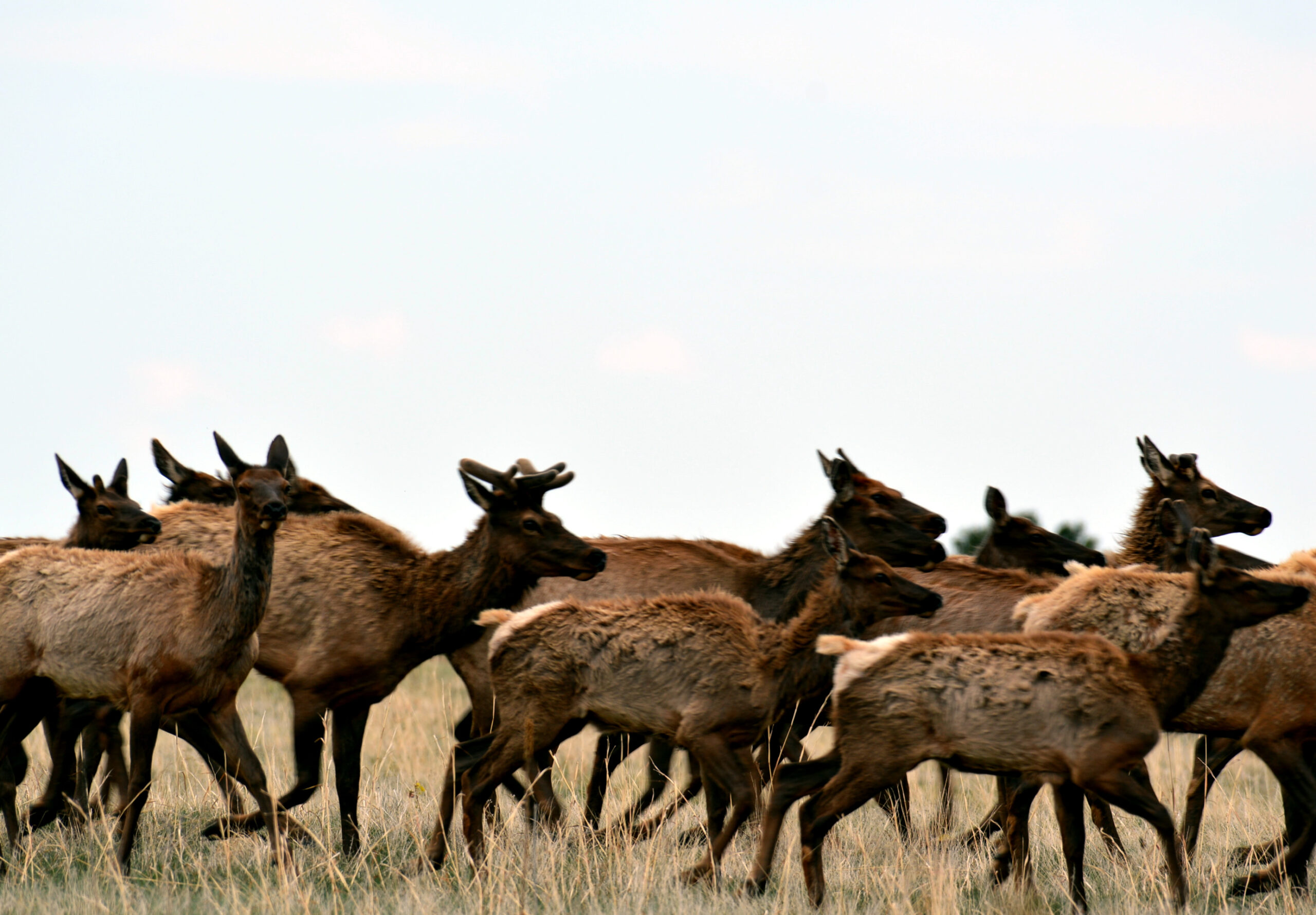
They’re called “habitat conservation lease agreements,” and they’re designed to reduce political opposition to habitat projects while offering more focused and temporary conservation benefits. Instead of securing permanent access and surface management of private land, these agreements are for 30 or 40 years, and have much less rigorous enrollment and performance requirements.
“We are hearing concerns from the Land Board, but we’re also hearing concerns about perpetuity, about the aspect of easements that ties the hands of future generations,” says Ken McDonald, FWP’s wildlife bureau chief who was reassigned earlier this summer to administer these new lease agreements. “We’ve concluded maybe a term lease is more achievable, but we want to go big. We don’t want to flit around with a little lease here and another there, but rather focus on landscapes. I’d equate our ambition more to CRP than to postage-stamp-sized projects.”
FWP’s habitat agreements focus on five priority landscapes, but McDonald acknowledges that the greatest conservation need is eastern Montana’s sage grouse habitat.
“Our priority is shrub grasslands,” he says. “Data shows that grasslands is the most imperiled habitat type in the world. And Montana has some of the most intact grassland habitat in North America. We’re trying to block up big chunks [of habitat] through the leasing program, aiming for 500,000 acres over 5 years in order to make an impact,” which includes keeping sage grouse off the endangered species list and keeping working ranchers on their land.
McDonald says the new term easement program, which prohibits cooperators from plowing native range, draining wetlands, and undertaking large-scale development—and which also has an access requirement—isn’t intended to replace perpetual conservation easements.
“These are in addition to, not in place of, those traditional acquisitions and easements,” he says. “Those [land-conservation categories] are still on the table, but we recognize that with changes to the Land Board and more scrutiny, there’s a higher bar to get them to the finish line.”
But critics of these short-term agreements claim they dilute benefits to the resource, the landowner, and sportspeople, as compared to perpetual easements.
“We look at these changes as just another way of chipping away at the easement program that has a stellar track record,” says Kevin Farron, Montana chapter coordinator for Backcountry Hunters and Anglers. “By providing this [short-term] alternative, there will be substantially less money available from Habitat Montana to fund easements, but there will also be less personnel bandwidth within FWP to move along those in-perpetuity easements that have real and lasting value.”
FWP is ready to accept applications for its new habitat agreements starting Aug. 1. But it’s unclear how popular the program will be.
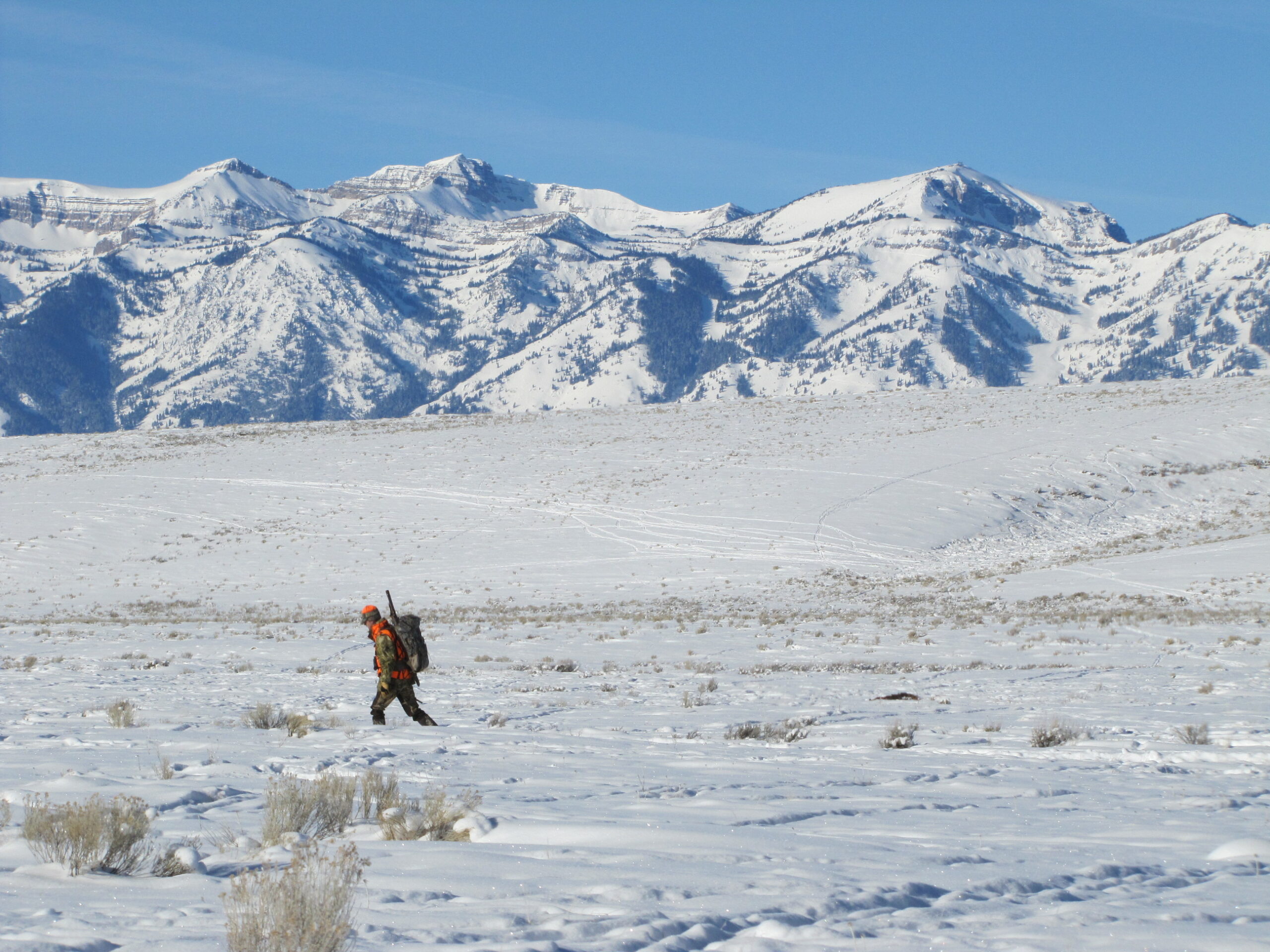
“Indications earlier this spring were that there was wide interest from landowners across eastern Montana,” says McDonald. “But then the [springtime] rains came, and that interest dried up. Right now we have no applications. We are hoping to put out a call for proposals in early August, with a 45-day application period. At that time we will see what the interest is, and will start the review, evaluation, and prioritization of proposals. We expect this to start slow but gain interest as early cooperators share their experiences with their neighbors.”
FWP projects the habitat agreements will cost $7 million per year. Given the split between Habitat Montana, with 25 percent of the funding, and Pittman-Robertson, with 75 percent, the hit to Habitat Montana would be about $1.75 million per year over five years. That should, says McDonald, reserve plenty of money for perpetual conservation easements.
An Impending Raid on Habitat Funding
No sources would talk on the record about the legislative shadow hanging over conservation funding in Montana, but most acknowledge the resistance to easements foretells a raid on the Habitat Montana fund.
“The legislature has a recent track record of being dubious about or hostile to FWP’s conservation programs,” said one source. “There’s this odd sense they think conservation isn’t conservative. It’s not a far reach to think that all the impediments to spending Habitat Montana is part of a longer play that will show up in the 2023 [legislative] session.”
Farron of BHA connects the dots between administrative inaction and legislative activism.
“Legislators who have essentially stopped FWP from spending Habitat Montana funds—which are earmarked specifically for land acquisitions and easements—can look at the balance and ask why it hasn’t been spent,” he says. “Then they can claim since there’s no demand for the fund that it should be abolished and its revenue redirected. I know that sounds cynical, but I think that’s what’s happening here.”
Another source of conservation funding, a portion of tax revenue from Montana’s recreational marijuana sales, approved in a 2020 ballot initiative, is already on the political chopping block. The initiative, which was approved by 57 percent of Montana voters, is supposed to funnel 20 percent of marijuana taxes to “conservation.” Another 4 percent is earmarked for “state parks, trails, recreational facilities, and wildlife protection.” But many sources expect the legislature to try to redirect destinations for the tax, which so far this year has raised more revenue than the state’s coal severance tax.
It’s one more indication to Farron that powerful interests are aligned against the sportsfolk of Montana, and against working landowners who retain the state’s rural character.
“There’s a message to landowners, with all the delays and uncertainty surrounding conservation easements, that it’s not worth your time to go down this road, because there’s no guarantee that anything will come of it,” says Farron. “Why go through all these hoops if there’s no realistic hope of progress or fruition? I think that’s intentional. It’s a way to quietly weaken the program so it’s non-functional.”
Farron also questions FWP’s pursuit of short-term sagebrush habitat agreements, because many other agencies offer similar programs, with more appealing terms. A group of U.S. senators just last week announced the introduction of the North American Grasslands Conservation Act, which intends to use some $290 million in federal funds to incentivize grassland conservation on private lands around the West.
“I can no longer tell landowners in good conscience that their project has a chance.”
According to its habitat-agreement proposal, FWP expects to pay up to 10 percent of land value for accepted properties, a valuation that will be established by DNRC appraisals. But Farron notes that landowners can also get out of the program by paying penalties that would be easily exceeded by revenue from rising land values. McDonald, for his part, says the overarching intent of habitat agreements, especially in eastern Montana, “is to keep grass facing up.” He suggests landowners could supplement Habitat Montana payments by participating in other programs, including Block Management (FWP’s hunter-access program), and also presumably CRP, other Farm Bill conservation programs, and even the new federal grasslands program.
An Uncertain Future
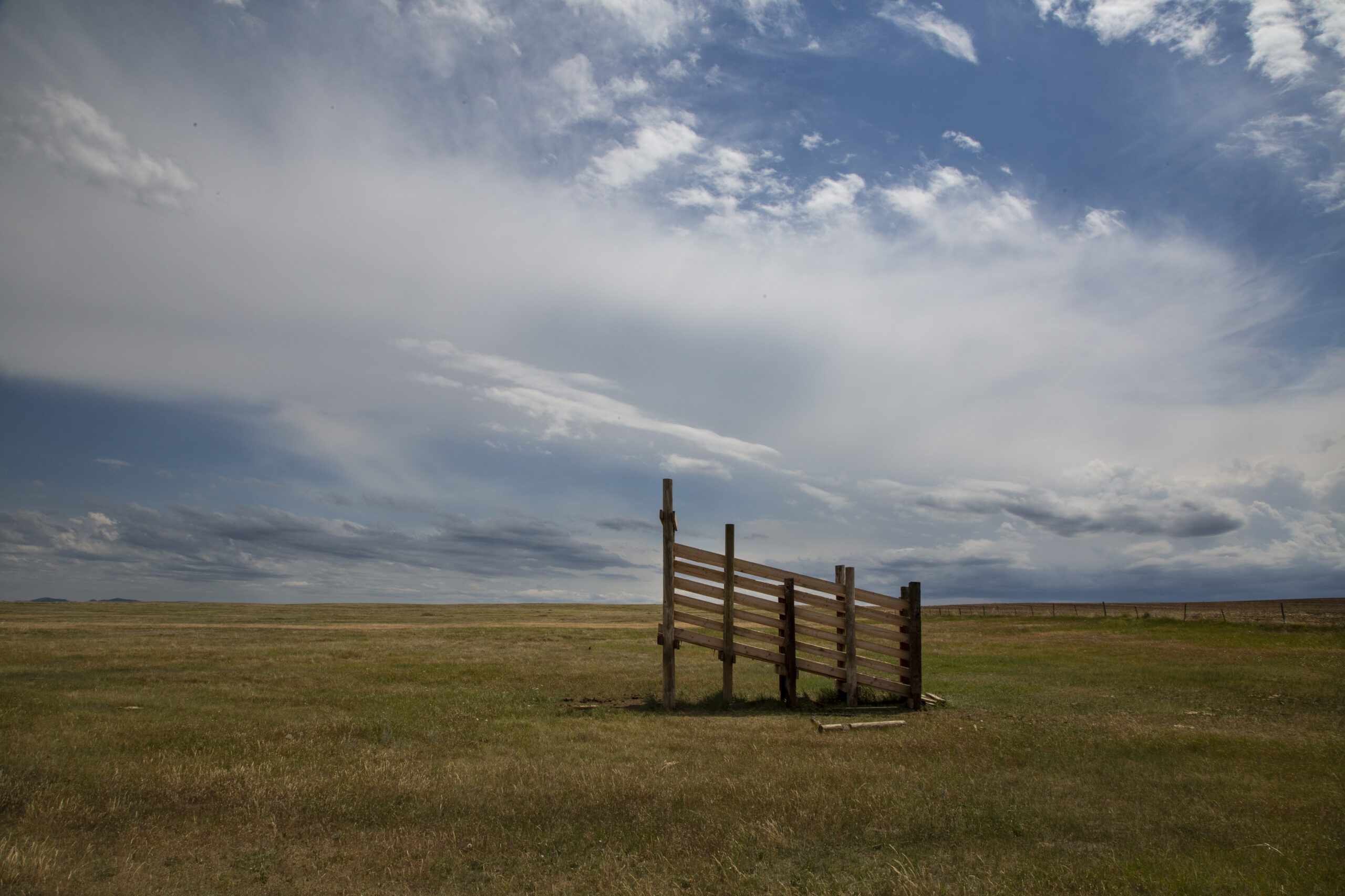
All these competing programs and their benefits can be confusing to landowners, who need certainty and consistency in order to make a living in an industry that’s subject to so many uncertainties, from erratic weather to fluctuating markets to generational turnover. That’s a perspective one current FWP employee considers every time she initiates habitat projects with landowners in her district.
“You have to build trust with landowners, and you need to be able to describe a predictable course of action you’re going to follow once you introduce them to a conservation program, whether it’s Block Management or an easement,” she says. “But what’s happened with this administration is that they have taken away any certainty about what will happen. I can no longer tell [landowners] in good conscience that their project has a chance.”
It’s a perspective Steen Andreasen sees more clearly by the day.
“Unfortunately, I put all my eggs in this one [FWP] basket, and if it doesn’t move forward, I’ll have to start looking elsewhere, to see if it’s interesting to someone else,” the landowner says. “I don’t know how much time I have, honestly. I know the Hutterites would buy my place in a heartbeat, but they’d farm it from end to end, and I’m not sure that’s in the best interests of the land or the animals or my family. I’m offering a chance to keep grass in grass, have good access to the river, good hunting, and keep a family where they belong.”
Read more OL+ stories.
